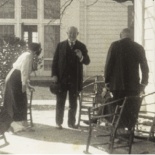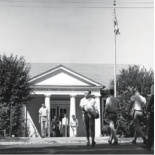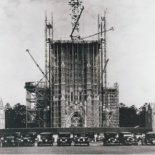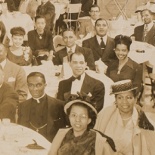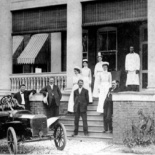A Century of Impact
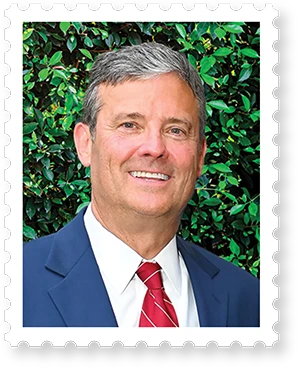
Reflections by
Rhett N. Mabry PresidentWhen James B. Duke announced the birth of The Duke Endowment in December 1924, leaders across North Carolina and South Carolina celebrated his massive philanthropic gift to the region.
The bequest included an initial $40 million, followed upon his death a year later by another $67 million — a total equivalent to about $1.9 billion in today’s dollars. The gift was so large and unprecedented that many struggled to grasp exactly how it would impact the future of the Carolinas.
“The material benefits of Mr. Duke’s generosity are already apparent,” then-North Carolina Gov. Angus W. McLean said, “but no one can visualize the benefits which he has bestowed on future generations any more than one can see in the tiny acorn the spreading oak, except through the eyes of faith and anticipation.”
As the Endowment’s 100th anniversary approaches, the work of assessing its impact continues. During centennial planning sessions throughout 2023, we thought about how the Endowment’s work has taken shape, its successes and shortcomings, and what it all means.
We knew the first question we would face: How much of Mr. Duke’s money have we distributed? We have made about $4.8 billion in grants since our founding in 1924. That’s about $11.6 billion in today’s dollars. But we also must ask ourselves an equally important question: What has been accomplished with those dollars?
There have been notable successes. The Endowment’s 1925-42 hospital-building campaign vastly increased the number of hospitals and hospital beds in the Carolinas, attracting a better trained cadre of physicians. In counties the Endowment supported, its investments caused a substantial reduction in infant mortality, a new study shows. The rate for African American babies declined twice as much as it did for white babies. This reduction in infant mortality is estimated to have saved at least 2,770 infants’ lives (1,730 Black infants and 1,040 white infants) from 1926 to 1942. Later-life mortality also declined because of the Endowment’s investments.
We have also provided major support to Davidson College, Duke University, Furman University and Johnson C. Smith University for a century now and, at times, helped to keep the doors open. We supported orphanages and, later, adapted with the times to move funding upstream, capitalizing on emerging evidence-based and evidence-informed programs that keep families strong and together when possible.
We have supported North Carolina’s rural communities through our work with United Methodist churches, providing everything from field training experiences and pension support for ministers to summer learning experiences for children. Today, a significant portion of our Rural Church funding helps to equip pastors for leadership during times of notable change.
Mr. Duke wanted all Carolinians to have an opportunity to live into their potential. The sheer size of this undertaking demands that we be strategic with our gifts. One hundred years ago, on the back end of World War I and a global pandemic, Mr. Duke wrote: “I might have extended this aid to other charitable objects and to other sections, but my opinion is that doing so probably would be productive of less good by reason of attempting too much.” He was clear about what he wanted to support and was prescient in understanding that the objects of his philanthropy remain relevant today.
Our adherence to Mr. Duke’s Indenture of Trust, which spelled out his philanthropic wishes, is complemented by the leeway to adapt modern approaches to meet steadfast challenges. That’s why we have adopted a cross-program emphasis on early childhood, seeking to invest more strategically in young children so they become the healthy, productive adults Mr. Duke envisioned.
When we settled on the theme for this year’s annual report — “Reflections on 100 Years” — we thought it appropriate to hear perspectives from our grantees, whose work sits at the center of our mission. In essays throughout this report, they share what their partnership with the Endowment has meant for them and the people and communities they serve.
Through their responses — these postcards from the field, if you will — along with historical and archival documents sprinkled through the report, you will learn that those bonds of trust, mutual respect and shared commitment extend back across generations of work.
At the end of our first century, the Endowment’s ultimate impact remains an open question. Quantifying the effect of our work can be elusive and often difficult, but we remain committed to assessing our progress as we work toward improving life in the Carolinas for the next century.
For today, it's enough to appreciate how far we’ve come.
Thank you, Mr. Duke.

Rhett N. Mabry, President The Duke Endowment
